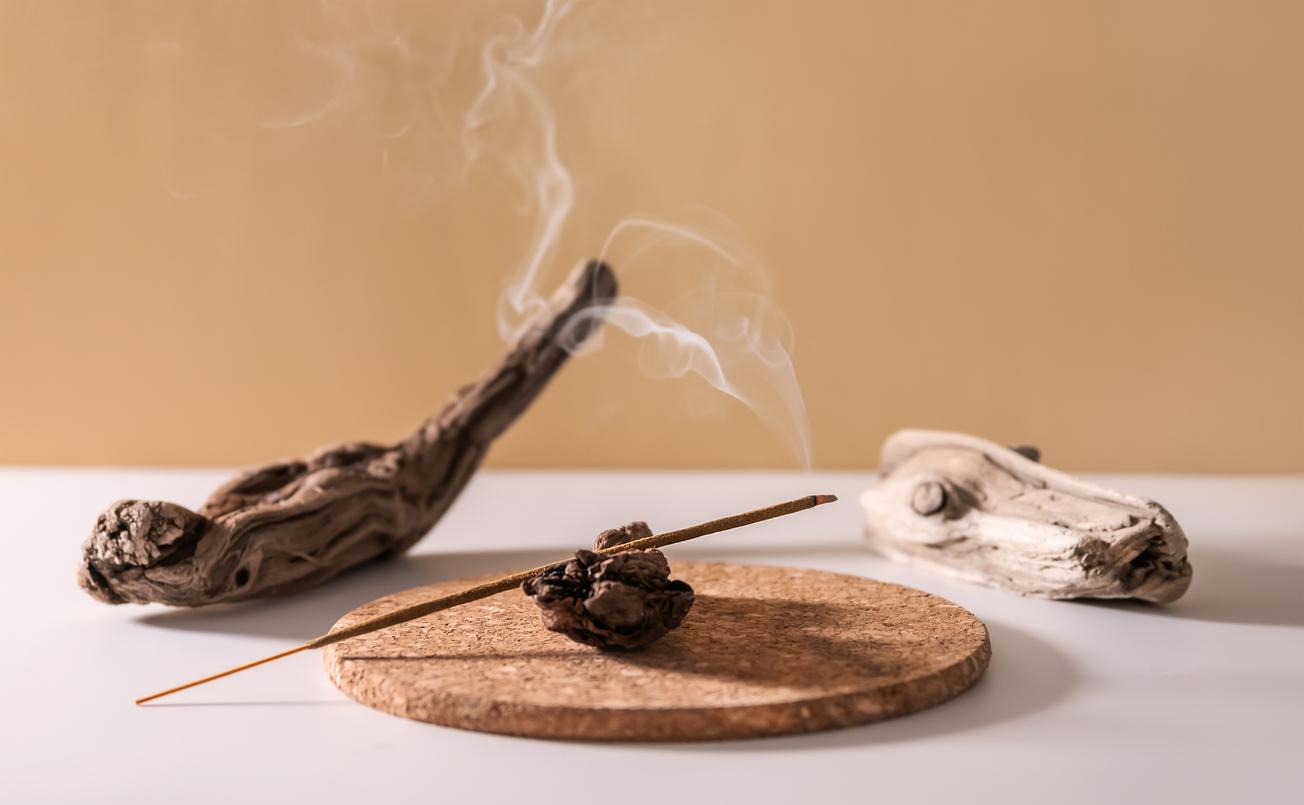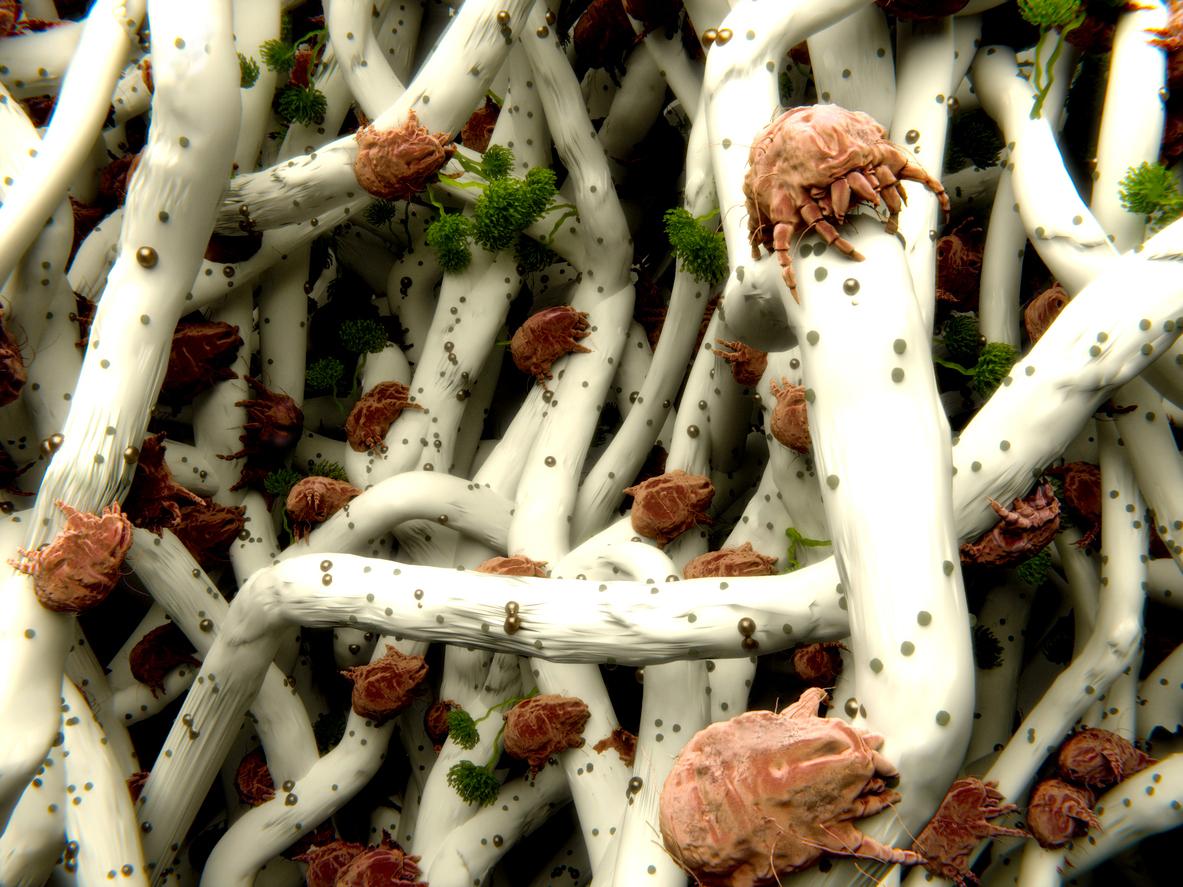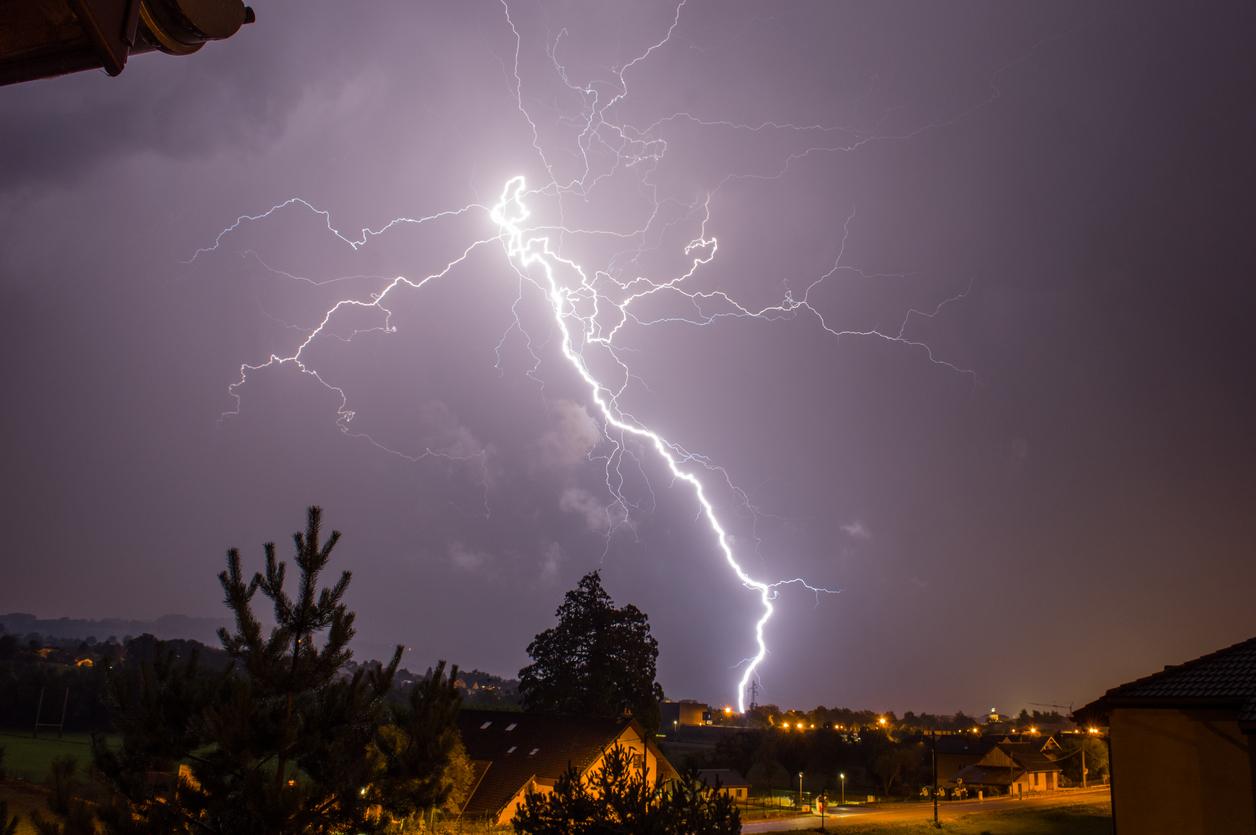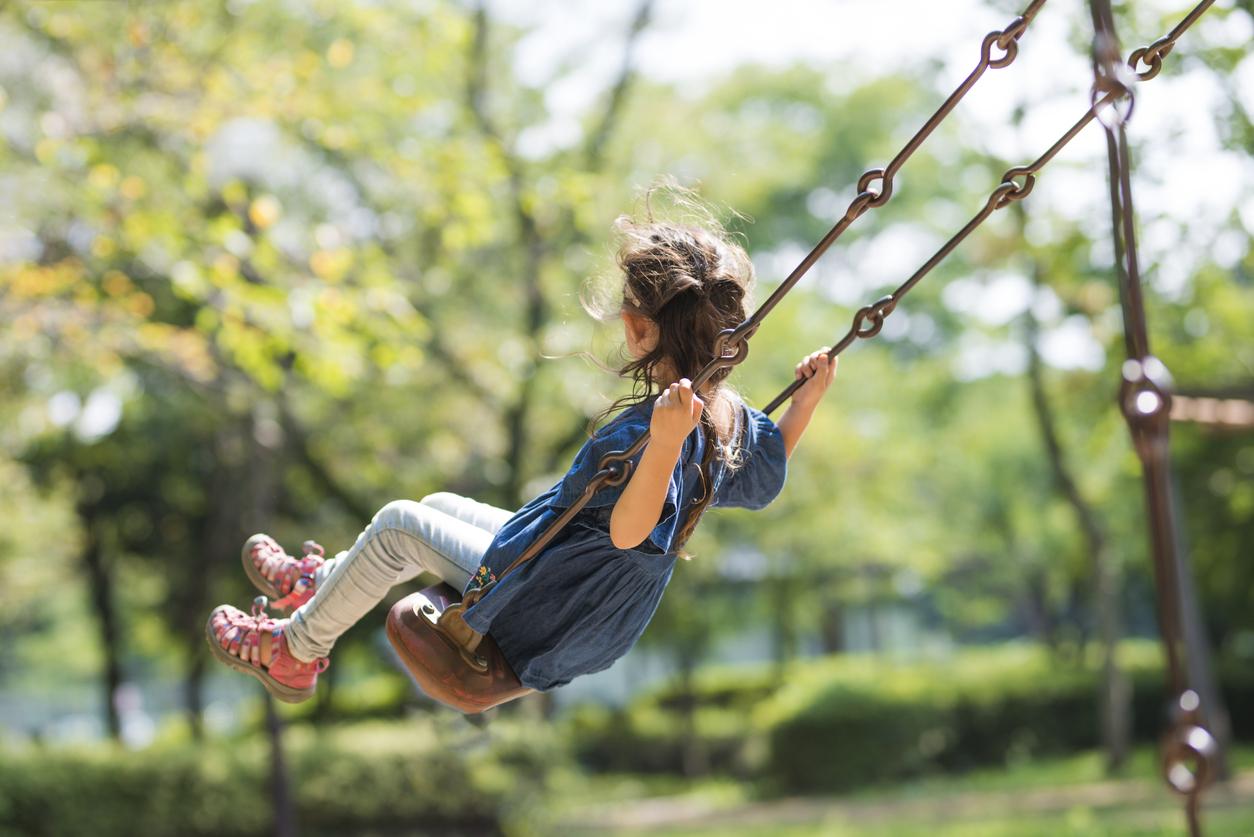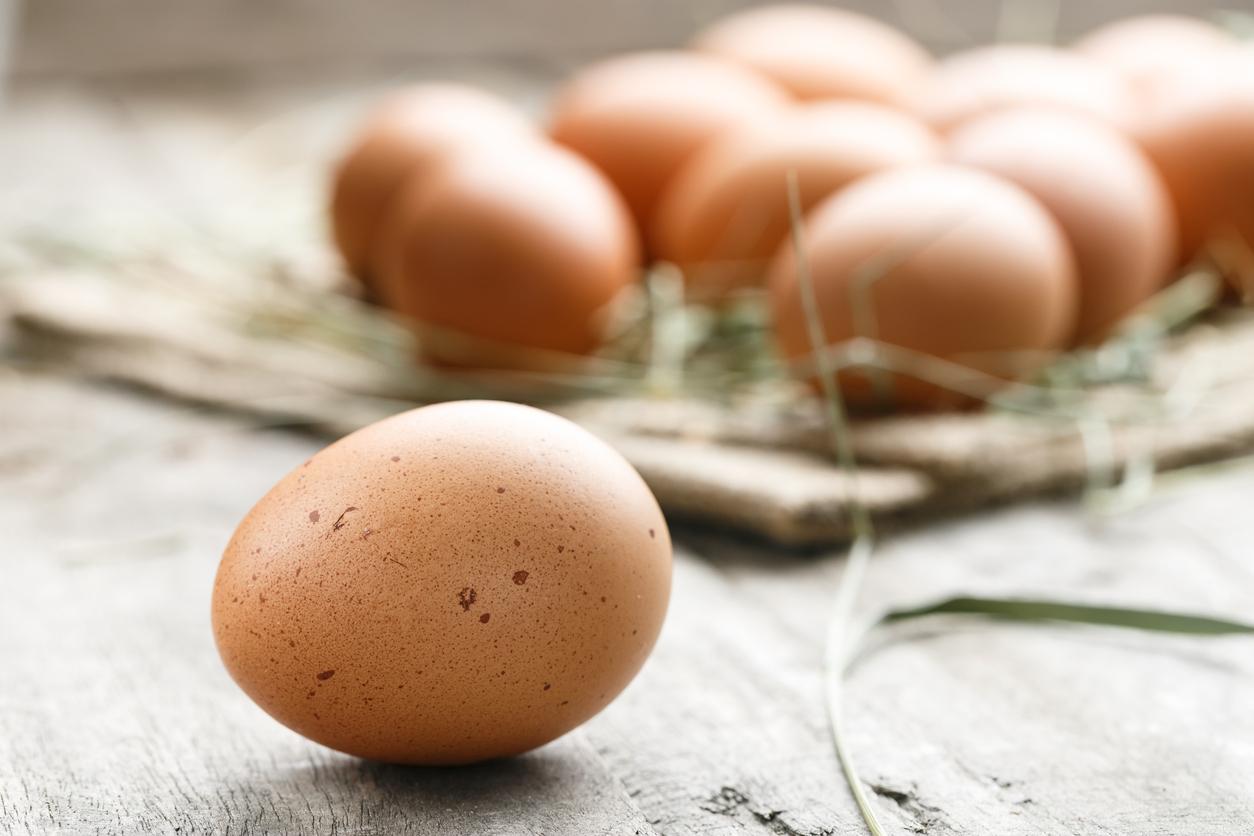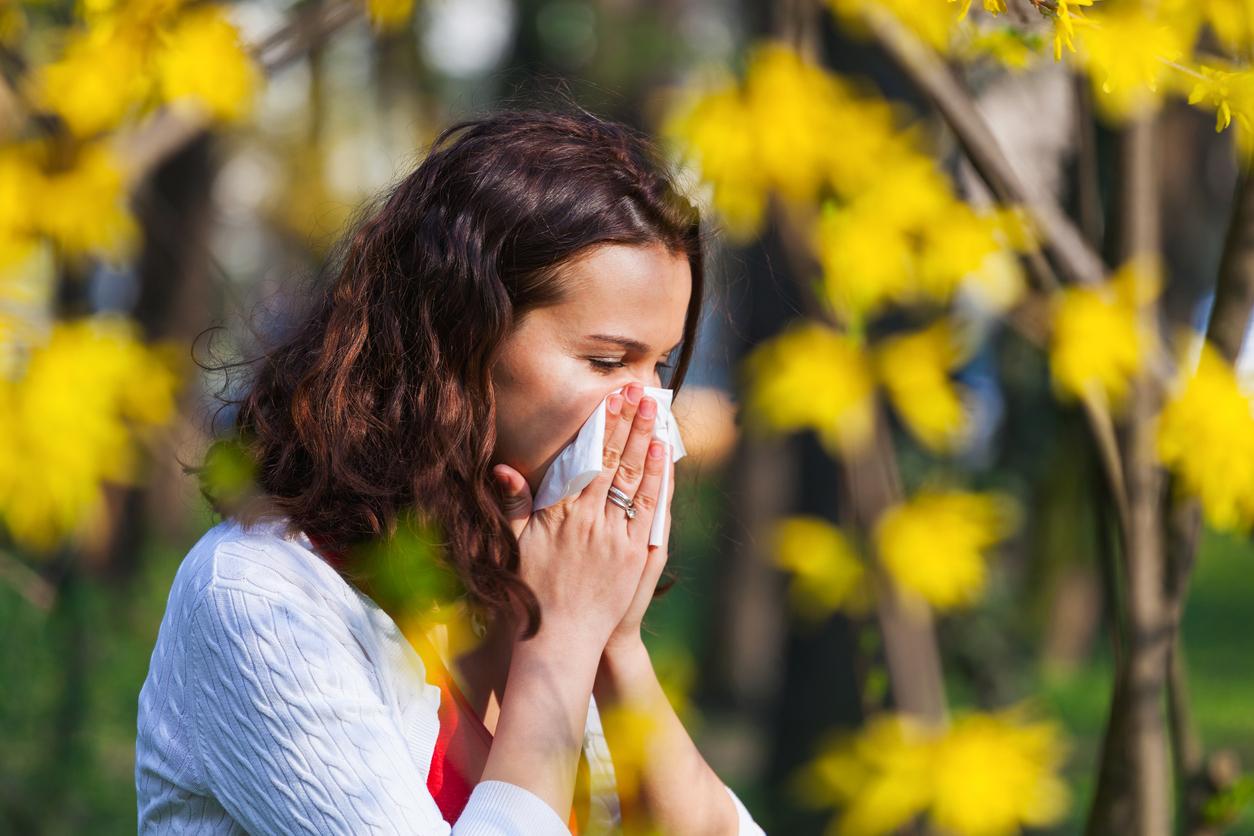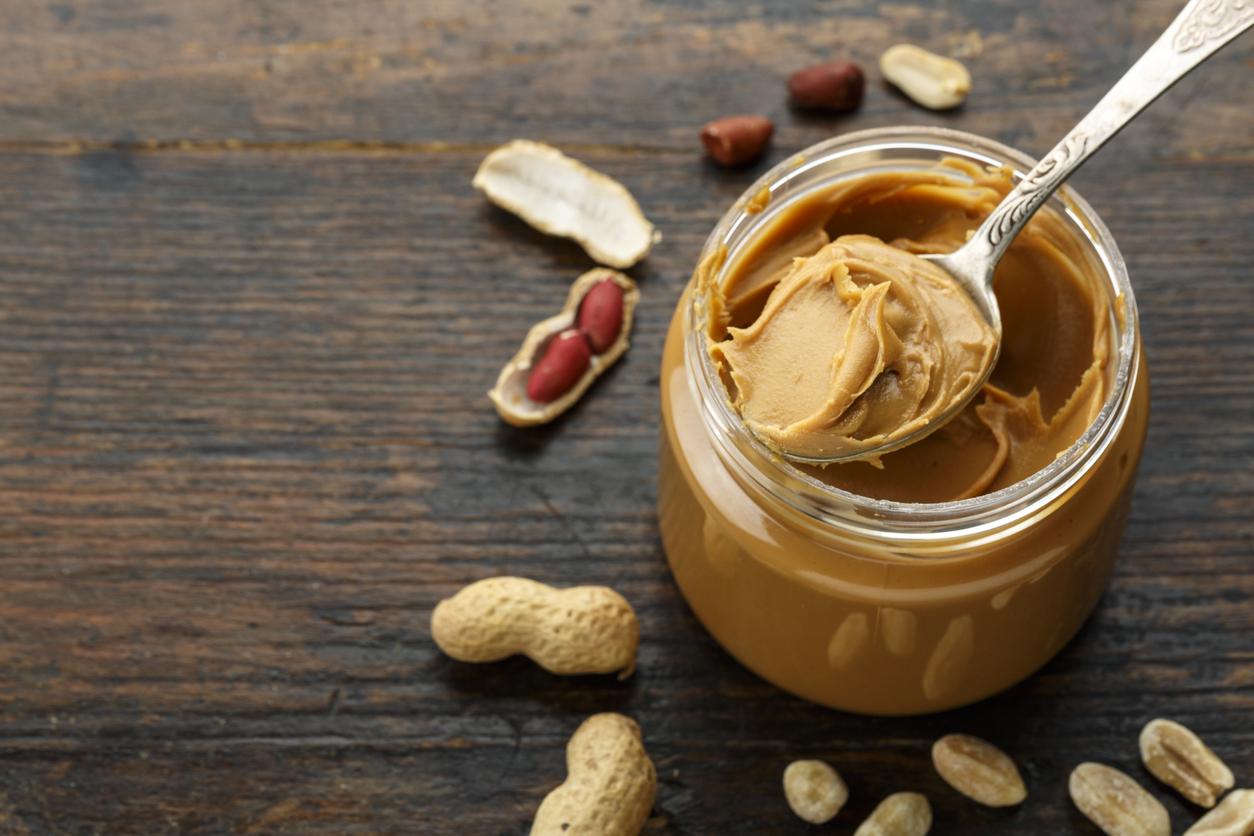Red and itchy eyes, runny nose, sneezing, itching… We are in the middle of the pollen and allergic reaction period. Here’s how to protect yourself.

- The pollen grain is the reproductive element produced by the male organs of plants and carried by the wind.
- Allergy is an immune reaction to a certain substance, such as pollen, pet dander or food.
According to the National Aerobiological Surveillance Network (RNSA), “for at least 20% of the population, pollens are responsible for allergic reactions, generally seasonal, called “hay fever” – a proportion that would have doubled in 10 years.
Know the periods at risk
Not everyone is allergic to the same type of pollen. Some will be more sensitive to that emitted by birch, hazel and others to grasses. Depending on the species, but also the climate and the regions, the pollens will not always be present in the ambient air at the same time, nor in the same quantities.
On average, at the national level, the main pollen periods are:
– in winter: a few trees (hazel, alder, cypress in the Mediterranean).
– In spring: majority of trees (birch, ash, then oak, beech, etc.).
– From late spring to early summer: certain herbaceous plants (grass, nettle, etc.).
– At the end of summer and in autumn: other herbaceous plants (mugwort, ragweed, and other plants of the composite family in particular).
To control the risk of developing an allergic episode and to take measures, it is therefore essential to be informed regularly. The RNSA publishes weekly on www.pollens.fr an allergo-pollinic bulletin presenting the risks by department and plant species. The site offers to receive personalized alerts by email or via the smartphone application “Pollen Alerts”. “You just have to fill in the allergen(s) to follow and the geographical area. The application also allows you to record your allergic episodes on a calendar“, Explain CLCV consumer association. “If you don’t know precisely what pollen you are reacting to, this will allow you to identify it more easily, or at least the periods at risk”, she continues.
Be vigilant outside
During high-risk periods, outings should be limited as much as possible. If you cannot avoid them, wearing a mask, large glasses and a hat will reduce exposure. Prefer travel in the morning, before the pollen spreads too much, or at the end of the day when it has subsided.
Beware of overexposing yourself to situations such as lawn mowing and garden maintenance, or during which you will be more sensitive, especially sports. In the car, drive with the windows closed and in recirculated air mode. Remember, before high-risk periods, to have the quality of your cabin filters checked, and to clean the interior of your car regularly.
Reduce pollen on yourself
After exposure to pollen, it is important to get rid of it as much as possible. During high-risk periods, it is a good habit to take off your clothes and shoes when you get home and, if possible, rinse or wash them. Take a shower or wash your hair where the pollens settle in large numbers. For the eyes and nose, use saline or a nasal spray to avoid maintaining inflammation overnight.
Preserve your home
If it is essential to ventilate your home daily, especially during a pandemic, this however promotes the penetration of pollen inside. To limit it, ventilate preferably before sunrise or after sunset, or when it rains.
Cleaning should be done more regularly, but always using a damp cloth or mop, and especially not dry at the risk of spreading the pollen in the air. The broom is to be banned in favor of the vacuum cleaner. Avoid drying clothes outside so that pollen does not settle there.
Finally, eliminate any other irritating air factor, which could aggravate the symptoms, such as tobacco, cleaning or DIY products, chimney fires, home fragrances, incense and candles, aerosols, etc.
Limit the risks in your garden
Not all pollens are troublesome and not all plants are allergenic. The so-called species “anemophiles”, that is to say for which the pollination is done by the wind, and not by insects, are particularly so, because they emit a greater number of pollens to increase their chance of fertilization. This includes in particular certain grasses (giant oats, baldingere, sandrye, hare’s tail, tufted canch, etc.), ragweed, cypress, birch… To find out more about the species to favor or contrary to prohibition, consult the site www.vegetation-en-ville.org.
Pollution and weather: aggravating factors
The risks of allergy to pollen are all the more important as the pollution is high. According to the RNSA: “Pollution can both act on pollens by modifying their external biochemical structure and thereby their allergenicity, and on the respiratory mucous membranes of humans by modifying their immunological sensitivity to pollen grains.”
The weather conditions are also to be monitored: the sun, the heat and the wind are favorable to the dissemination of pollen. Thunderstorms can lead to their concentration locally and are the cause, according to the College of Allergology Teachers, of acute bronchospasms “whose cases are multiplying”.

.









